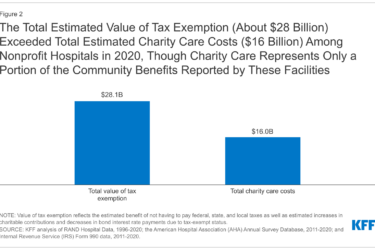 By now you have heard of “Dentalgate.” The administration, twice, released ACA enrollment numbers this fall that included nearly 400,000 dental plans, alongside the regular health insurance plans. That made it sound like more than 7 million people were covered in the state and federal exchanges.
By now you have heard of “Dentalgate.” The administration, twice, released ACA enrollment numbers this fall that included nearly 400,000 dental plans, alongside the regular health insurance plans. That made it sound like more than 7 million people were covered in the state and federal exchanges.
That’s wrong. Depending on which date you used, there were either about 6.9 million (as of mid-August) or 6.7 million (October).
You know the politics too: The GOP said it was “deception;” the Department of Health and Human Services said, “Oops.” There will be a hearing on the Hill on Dec. 9 when CMS chief Marilyn Tavenner will testify before the House Oversight committee.
But what do we know about where the numbers come from, or what they say about attrition from the 8 million who signed up for coverage by the middle of April?
We know something about the origins of the data but not so much about the attrition.
Earlier in the year, we got monthly reports from HHS, specifically from an office known as ASPE (the Office for the Assistant Secretary for Planning and Evaluation) which in turn has an Office of Health Policy. Those reports are here – scroll back to find monthly enrollment, which ended in May. There is also a less comprehensive summary from November which includes forecasts and explains why the HHS projections are more modest than those from the Congressional Budget Office.
Those monthly reports were based on “plan selection” and the data came from the exchanges (federal and state). In other words, they referred to the number of people who had chosen a plan. Period. It didn’t say how many had paid – both because there’s a time lag (you don’t have to pay weeks or months in advance) and because the exchanges don’t generate that date.
People pay the insurer, not the exchange. It was known that not everyone would pay – that’s true in the non-exchange insurance world, too. The dispute was how many wouldn’t pay. (America’s Health Insurance Plans estimated it would be roughly 15 percent; critics of the law predicted it would be much higher.)
Fast forward to September: Tavenner goes to Congress and, surprisingly, announces that, as of mid-August, there were 7.3 million covered people. (In November, HHS adjusted that down to 7.1 million as of mid-October). It wasn’t in her written testimony, there was only a brief heads up to reporters, and there was not a lot of documentation made public later.
Those numbers were the paid-up numbers (as it turned out – paid up for both health AND dental, so the numbers were inflated). It’s what HHS calls “effectuated enrollment” – which is fancy talk for paid and covered. That data comes from the insurers, not the exchange, and it has to traverse the infamous “back end” of HealthCare.gov.
It clearly was not well vetted before the number was released. When the detailed spreadsheets were given to a House panel, they spotted the dental problem, and ASPE had separated out dental in the past. Congressional testimony by a top official is usually VERY carefully vetted – we don’t know the full sequence of what happened here.
Next question: What does it tell us about attrition? Did the number drop from 8 million to 6.7 million because people didn’t pay? And did they not pay because they couldn’t afford it, didn’t like it, were angry when they found out their doctor was not in it? We have no way of knowing– but we should NOT assume it’s all payment problems. Nor should we assume that everyone who got covered was happy and willing to keep paying, that no one was dissatisfied because of high deductibles, copays, or narrow networks.
But there are more variables here. Fluctuation always was expected, because there is off-season or “special enrollment.” There was a lot of fluctuation in enrollment in the pre-ACA individual market too. Precisely because it is a backup or fallback, most people don’t stay in that market for years.
People can go into the exchange for “special enrollment” when they lose employer-sponsored coverage or turn 26. They can go in when they get divorced and lose coverage. They can add a family member when they have a kid. They leave the exchange when they turn 65 and get Medicare, or when they get a new job that has coverage. There are other reasons, but those are the big ones.
So did the number drop from 8 million to 6.7 million because of dissatisfaction and payment problems? No, special enrollment was a factor.
Were dissatisfaction and payment problems irrelevant? No.
Can we break down which was which? No. Not unless and until we get far more detailed and specific numbers from the insurance industry and officials.
“These people dropped out, but in the pre-ACA market there was turnover,” Sabrina Corlette, senior research fellow and project director at Georgetown University’s Center on Health Insurance Reforms, told me. Who left for what reason? Her response: “We have no idea.”









